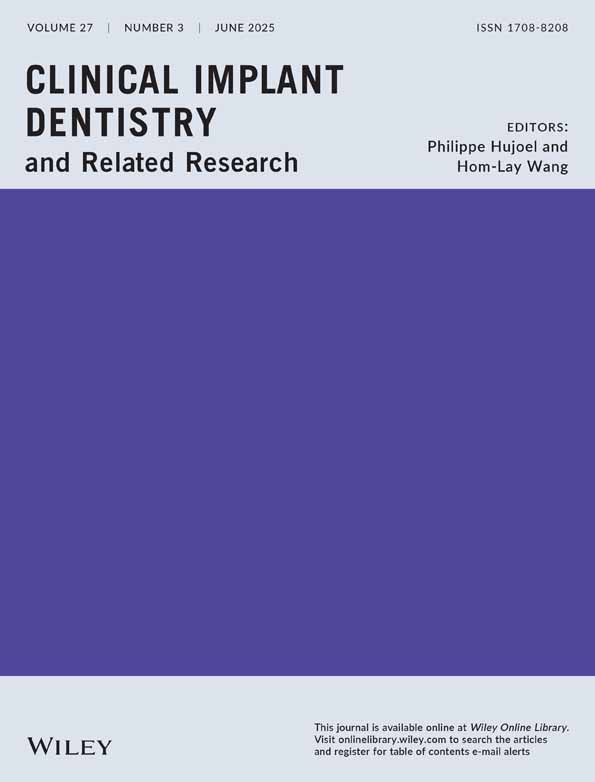Strontium-Doped Implant Osseointegration Under Dry Preservation Conditions: In Vitro and Rat Model-Based In Vivo Studies
Funding: This work was supported by the Foundation for Innovative Research Groups of the National Natural Science Foundation of China (82271026, 82301139) and a Project Supported by the Scientific Research Fund of Zhejiang Provincial Education Department (Y202457185).
Jimin Jiang and Yingyu Zeng contributed equally to this article.
ABSTRACT
Objective
This study aims to develop an innovative dry preservation surface modification for strontium-modified pure titanium implants to prevent surface degradation by hydrocarbon pollutants in the air and to enhance osseointegration.
Methods
An optimal parameter dry preservation surface modification was established by immersing samples in a 0.1 M KCl + 0.1 M SrCl2 mixed solution for 12 h, followed by air-drying and storing in sealed glass vials, as the strontium-doped dry preservation (SrP) group. Surface characteristics were analyzed using appropriate instrumentation. Cell adhesion, proliferation, and osteogenic differentiation were assessed in in vitro studies. Forty-eight male Sprague–Dawley rats were included in in vivo studies, with a total of 96 implants placed bilaterally in the tibiae. Micro-CT, removal torque tests, and histological analyses after 4 or 8 weeks were conducted in order to evaluate the osseointegration in each group.
Results
Four distinct groups were involved in this study: the SrP group, the freshly prepared strontium-doped (SrF) group, the strontium-doped group with no dry preservation (SrN), and the modified sand-blasted large grit acid-etched (modSLA) group. After 6 months of storage, the SrP surface maintained favorable hydrophilicity, micro-nano morphology, and consistent strontium ion release similar to SrF. Moreover, it maintained similar levels of cell proliferation and osteogenic differentiation as SrF while exhibiting significantly better performance than SrN in in vitro studies (p < 0.05). Additionally, after 12 months of storage, it demonstrated excellent osseointegration comparable to the SrF group while significantly outperforming SrN in in vivo studies 4 weeks post-surgery (p < 0.05).
Conclusion
The dry preservation surface modification successfully maintained the nanotopography and hydrophilicity of strontium-doped pure titanium implants during 6–12 months of storage, and effectively mitigated the premature release of strontium ions associated with wet preservation methods, thereby significantly preserving the osseointegration performance of strontium-doped titanium implants.
Conflicts of Interest
The authors declare no conflicts of interest.
Open Research
Data Availability Statement
The data that support the findings of this study are available on request from the corresponding author. The data are not publicly available due to privacy or ethical restrictions.




